Short-Sequence ESL Lessons
Jump to:
- Why Short Sequences
-Describe a Character: Appearance & Action
-Present, Past, and Future (speaking/writing)
 -Movie Karaoke
-Movie Karaoke
-Paraphrasing Karaoke
-Rewrite the Script
-Jigsaw
-Guess the Dialogue
-Guess the Vocabulary
-Movie Vocabulary List
-Action Cards
-Cloze Encounters
-Word-for-Word Dictation
-Blind Summary
-Hear-the-Word Bingo
-Change the Ending
-Grammar Focus
Introduction and Preview
Welcome to the Movies Grow English home base for Short Sequence ESL lessons. On this page you can link to more than 40 fully developed five-page Short Sequence movie-based ESL Lessons for $1 each. There are also links (directly below) to a limited number of free Short-Sequence ESL Lessons. Finally, by scrolling down this page or hyperlinking from the above Table of Contents, you'll find awesome suggestions for Activities and Exercises based on Short Sequences. Overall, I'm so excited about the possibilities for short-sequence ESL movie lessons. I've had great success using them in the classroom at UCLA and especially since 2013 at University of Southern California (USC). There are lots of student comments regarding specific short sequences here at the FORUM.
In conjunction with this page, Teacher - Whole-Movie Lessons examines challenges, theoretical rationale, and pedagogical constructs pertaining to the use of whole movies in the ESL classroom. Teacher - Classroom Guidelines contains detailed discussions on the practical aspects of class management and organization. These two pages contain information which also applies to Teacher - Short-Sequence Lessons. I suggest the three pages be read in the same order as on the menu bar to the left.
This page considers how and why short-sequence movie lessons can play an important role in the routine of the ESL classroom. It discusses how short-sequence ESL lessons can provide a compelling pathway toward the achievement of student learning outcomes. I hope teachers will find ways to not only utilize these lessons and activities but also extrapolate their utility into one's own particular science, philosophy, and artistry of teaching as we each carve pathways and fuse connections of human interaction within the layers of our shared humanity.
Short Sequences: Five Minutes of Magic
Some say that big things come in small packages. Although it may seem cruel and unmerciful to orphan a short sequence from its whole movie, teachers should by no means feel obliged to show entire movies in the ESL classroom. For one thing, time constraints may preclude the showing of whole movies. In Motivational and Effective Film Activities for the Language Lab Class by Lin, Li-Yun (2000), she details her experience and rationale for using abridged films and short sequences in the EFL classroom. While I haven't tried my hand at abridged films, there have been instances where I might fast forward or skip over a portion of a whole movie. As for short sequences, my experience in selection and use is similar to how Lin, Li-Yun describes her successes with short sequences.
Short sequences typically run 4-6 minutes in length and usually contain more than one scene. It's very practical to watch them several times during the course of a one-hour lesson (unlike whole movies). They can be examined carefully, much like the close technical analysis of poem. Short sequences lend themselves to all sorts of language learning. For example, students can practice a particular grammar point. Vocabulary, listening, and pronunciation can also be examined from different points of view, practiced, and assessed. Short sequence lessons can serve as high-interest writing prompts. With short sequences, most of the lesson time is spent in actual language learning (unlike with whole-movie watching where most of the time is spent with acquisition).
So what about high-interest topics? I get excited when I run across a reading or an oral skills ESL textbook that claims its chapters are designed around high-interest topics. However, my classroom experience with such books is often disappointing, and the only high interest in the classroom is what the students and I bring to the lesson. The problem in these books is not with the topics. They seem high interest enough. It's how the topics handled.
For example, consider the topic of job interviews. Most students in an academic ESL program are intensely interested in the secrets of a successful job interview. You could probably hunt down several ESL textbooks that devote a chapter to job interviews. They typically model the topic with video or maybe just audio that depicts a completely dry and unrealistic rendering of a job interview played out by a pair of unknown third-string actors. I've seen students visibly laughing while watching these things, and I sometimes find myself joining in. What's disturbing is that these books have big-name publishers.
On the other hand, you could show the Runway Job interview from the film "The Devil Wears Prada" and examine how Anne Hathaway's character thaws the cold heart of Amanda Priestly, played by Meryl Streep (winner of three Academy Awards). Or you could watch the Google Job Interview from "The Internship" and see how Vince Vaughn's and Owen Wilson's characters execute perfect timing to talk themselves into an impossible-to-get job.
A carefully-selected short sequence, ripped from a whole movie, functions like a self-contained mini-movie with a beginning, a middle, and an end. Short sequences work best when they give their students a sense of having had a complete viewing experience. Short-sequences at MGE are selected with this very much in mind.
Part of movie magic is the ability to compress time. Years can fly by in seconds, especially in a montage sequence. Consider Derek Vinyard's jail time in the back story of American History X where three years compress into fifteen minutes. In contrast, short sequences actually expand time. Consider how Christopher Nolan manipulates time in the dream levels of Inception. To experience this phenomenon, show a short sequence to your students. Then ask them to guess how much time they spent watching the clip. In my experience, they typically overestimate by a good amount of time. BTW the Runway Job Interview lasts 5.5 minutes, and the Google Job Interview clocks in at 5 minutes, yet both job interviews feel like full-length ones. Such is the magic of movies.
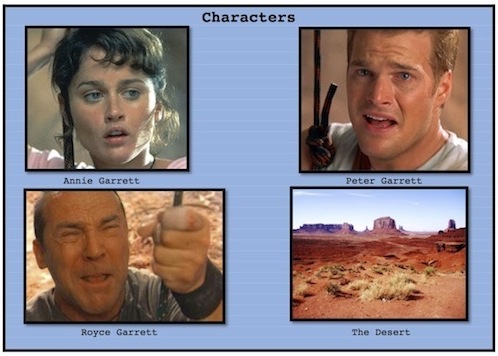 With short sequences, the illusion of time expansion creates a big advantage for teachers because it compresses language-learning opportunities within lessons based on short sequences. In the opening sequence of Vertical Limit, a great deal of information is quickly revealed about the relationship between the brother, sister, and father, which sets the stage for the story that follows, yet the short sequence is a complete 6.5 minute story in itself, and it's filled with opportunities for language learning.
With short sequences, the illusion of time expansion creates a big advantage for teachers because it compresses language-learning opportunities within lessons based on short sequences. In the opening sequence of Vertical Limit, a great deal of information is quickly revealed about the relationship between the brother, sister, and father, which sets the stage for the story that follows, yet the short sequence is a complete 6.5 minute story in itself, and it's filled with opportunities for language learning.
Now that rationale for using short sequences in the ESL classroom has been examined, I'd like to share some examples of classroom Activities and Exercises, which are also based on short sequences. In a way, this is the most fun way to use short sequences because activities and exercises can be the most creative and communicative way to exploit short sequences.
Describe a Character: Appearance & Action
The six sequences below are each based on three or four characters. For this activity, they should be watched in class two or three times times with and without subtitles. But first, students are formed into teams and assigned a character whose appearance they describe, and action they narrate as a story. This activity challenges students to produce vocabulary when describing, and to use appropriate grammar to express a given time reference when narrating. Time permitting, teams can put their thoughts into writing and share them on a poster board. Teacher combines the four writings into a single document which everyone can discuss at the next class meeting. In addition, teacher can assess the students for retention of the vocabulary contained in the lesson. The idea for Appearance and Action was first suggested to me by Bella Anikst at the UCLA American Language Center. For more details, please hyperlink to the Full Lesson Plan below. These one-hour lessons are recommended for all levels. There is no charge for these files.
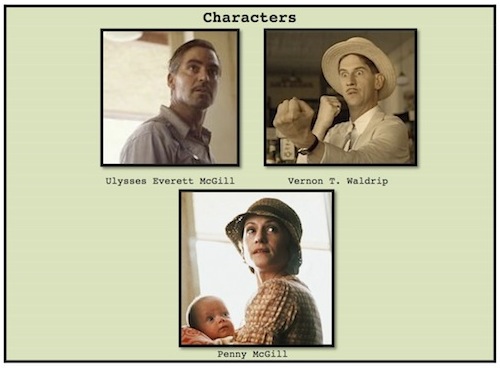 Web Pages:
Web Pages:
Almost Famous: (Not on the List)
Cars: (Tractor Tipping)
Iron Giant: (At the Diner)
O Brother, (Where Art Thou? Woolworth Fistfight)
Vertical Limit: (Rock Climbing)
.PDF Files:
Almost Famous (Not on the List)
Cars (Tractor Tipping)
Iron Giant (At the Diner)
O Brother, Where Art Thou? (Woolworth Fistfight)
Vertical Limit (Rock Climbing)
Full Lesson Plan - Appearance & Action
Describe, Summarize, and Predict (speaking/writing)
Here's an exercise that gets at the heart of vocabulary and grammar, and it requires students to demonstrates both accuracy and fluency. Select a 3-5 minute short sequence that is visual with more action and less dialogue. Its ending should suggest what might be coming in the story. After watching the sequence, students are asked to describe the scene (present tense), summarize the action (past tense), and predict the outcome (future tense). To turn this oral activity into a game, points could be given as follow:
Describe: descriptive adjectives (1 point each)
Summarize: past tense verbs
(2 points each)
Predict: unique future modals (5 points each)
An example of a good sequence for this exercise is in The Hunger Games. After the final battle between Katniss and Cato, and Cato is killed by the mutant dogs, Katniss and Peeta are supposed to be the dual winners, but instead, the two-winner rule is revoked placing them in a difficult spot. This is a good sequence because it prompts students to describe, summarize, and predict.
As a timed writing activity, students work in small teams. They are only told in advance that they are going to write something, but not that they were going to describe, summarize, and predict. When time is up, teacher collects each team's response and later grades them according to the above point table. The winning team is announced the next class session. Recommended for intermediate level and up.
Movie Karaoke
Here's a way to use Karaoke for practicing English in the classroom. No singing required. Students are instructed to watch a short sequence with dialogue and subtitles. They watch the sequence again with volume down, read the subtitles, and mimic the speaking style of one of the actors. During the first pass, students should pay careful attention to both the subtitles and how the lines of dialogue are delivered by the actors. Before the second pass, teacher should clarify any questions about pronunciation (including tone and stress) and vocabulary. During the second pass, students focus on projecting their enunciation with a realistic emotional timbre. This exercise usually works best if students select only one character to mimic. One of the challenges of movie karaoke is simply to keep up with the dialogue (pronunciation fluency) as it often progresses at a brisk pace. Movie Karaoke Lesson Plan identifies short sequences from six movies, each based on the theme of falling in love. They are:
*It Happened One Night
*Casablanca
*Rain Man
*Titanic
*Shakespeare in Love
*Adjustment Bureau
Movie karaoke is better suited to high-level students, but it might work with a lower-level group as well. My thanks to David Chrisman at the UCLA Extension, American Language Center for introducing this concept to me. David and I co-taught the ALC movie elective for several years, and he has been a generous partner in the pursuit of excellence. Recommended for low-intermediate and up.
Paraphrasing Karaoke
This is variation of movie karaoke but with less use of captions and closer attention paid to just a single short sequence (instead of several theme-based sequences in the above example). The teacher selects a short sequence that she or he knows will be more challenging than usual for the students because they will be asked to speak and act the story in their own words.
To begin this activity, pre-teach key vocabulary in the short sequence. Then, students view the scene with no captions while taking notes. Next, students check their notes by watching again with captions. Finally, students re-enact the scene in small groups working from their notes. One student narrates the story, and others act out the parts. Of course, they’ll be mostly paraphrasing. Teacher can select one or two groups to act in front of the class. Recommended for intermediate level and up.
Rewrite the Script
Another exercise similar to karaoke is to give students a copy of the dialogue for a short sequence. Students are divided into small teams and watch the scene while reading the dialogue. Then, they rewrite the dialogue in their own words. It could be a paraphrase or something completely different, as long as it makes sense in the scene. Finally, they watch the scene again with no sound and act out the dialogue using their new version. Students can volunteer to share with the class, and they can all vote on their favorite rewrites.
This short-sequence lesson works well with clips from movies based on Shakespeare plays such as Much Ado About Nothing because the unfamiliar syntax and vocabulary of the dialogue seems to encourage students to paraphrase and even write a completely different story and dialogue with the same scene. The trick is to make sure students have some understanding of the given dialogue so they can absorb it and possibly build from it. The results can be quite funny at times. Recommended for high-level students.
Jigsaw
This idea was first devised by psychologists and educators looking for methodologies to build self esteem among inner-city youths. It later found its way into ESL as a way of building self confidence with language production.
Choose a short sequence that can be watched in four segments of roughly-equal length. Organize students into groups containing four students each. Number each student 1 to 4. With sound off and subtitles on, the #1 students watch the #1 film segment while taking notes. Do the same with #2, #3, #4.
as a result, each student has seen a portion of the short sequence and is responsible for sharing it with the other three members of his or her team. Thus, groups should collectively be able to piece together the whole sequence. This peer activity requires every student to participate in order to complete the task. An alternative approach, if feasible, is to have the students who are not viewing their segment leave the classroom. The segments can then be watched with sound on.
To make this activity more challenging and fun, present the segments out of sequence. In order to recreate the short sequence the teams will have the additional task of putting the story parts into the correct order. Recommended for high-intermediate and up.
Guess the Dialogue
Everyone likes a guessing game. Here's a good one based around a short sequence. Choose a 5-minute sequence with lots of dialogue, and show it to the class with no subtitles and no sound. In teams of 3-4, students guess what the characters are saying based on visual clues, and reconstruct the dialogue based on previous knowledge of the movie. Team members practice speaking their version of the dialogue.
The fun begins when they take turns acting out their version of the short sequences for the class. An alternative is for each group to take turns speaking the words as the sequence goes by without sound or subtitles. Finally, show the actual short sequence with subtitles and sound. To determine the winner students vote on which other team came closest to the actual dialogue.
This activity can work well with a short sequence from a popular movie that students are likely to have previously watched and remembered (e.g. Transformers, The Matrix). The challenge is to reconstruct the dialogue from both visual clues and memory. Recommended for intermediate level and up.
Guess the Vocabulary
How do you explain what a word means? This simple activity can help.  The teacher thinks of a vocabulary word from a short-sequence (or whole-movie) lesson that students are currently watching. The teacher then tries to get the students to guess this word by providing clues of meaning. The first student to guess the word gets to come to the front of the class and do as the teacher did.
The teacher thinks of a vocabulary word from a short-sequence (or whole-movie) lesson that students are currently watching. The teacher then tries to get the students to guess this word by providing clues of meaning. The first student to guess the word gets to come to the front of the class and do as the teacher did.
Clues of meaning include a verbal description of the word meaning (e.g. pleasant-easy to enjoy), say the opposite (e.g. hot-cold), give an examples (e.g. fruit-apple, orange, pear),use body language (e.g. shy-place your hands in front of your eyes), use the word in context (e.g. put-They *** the cost at $1,000,000.), and draw a picture (e.g. star-draw a picture of a star). This activity allows student to practice strategies for explaining and remembering the meanings of new words within the stimulating environment of movies. Recommended for all levels.
Movie Vocabulary List
This exercise may seem a bit tedious to both prepare and execute, but the dividends can be staggering. On the Movies Grow English menu bar ( left side of the page), link to Movie Vocabulary List. Here you'll find all the vocabulary in all the whole-movie and some short-sequence movie lessons cross-referenced. There are more than 6500 entries. Most of the words are represented in multiple movies, and many words have multiple forms and meanings appearing in multiple movies. Academic-Word-List entries are marked with an asterisk*. This material provide opportunities to demonstrate and teach meaning in context but you'll need copies of the movies to do this.
For example, look up these words in the Movie Vocabulary List: integrity* (appears in 9+ movies), pathetic (appears in 17+ movies), perimeter (appears in 10+ movies), prick (appears in 16+ movies). This means students can locate where these words are used in the given films and observe how these words can have the same or a different meaning.
As for multiple phrasal forms, consider this example: get, from the Movie Vocabulary List. You may find get, get acquainted, get back on the map, get in your blood, get to the bottom of, get carried away, get cracking, get dumped, get a grip, get the hang of it, get high, get it, get through your head, get it together, get a kick out of, get laid, get lighter, get my swerve on, get off, get off on, get off on the wrong foot, get on one's nerves, get one's shit together (vulgar), get out, get out of Dodge, get the shaft, get situated, get stood up, get straight, get to them, get wet etc. Many of these entries are in multiple films, and some have more than one meaning depending on how they're used.
As for morphological families consider: diversion, divert, diverse, divergent, diversity which has a combined 10+ entries in the Movie Vocabulary List. By looking these words up, students have the opportunity to experience this word used as a noun, verb, and adjective, whose prefix, di- means "two, double, or twice", whose root/stem, -ver- means "true or truth", and whose suffixes, -sion,- t,- se, -gent, -sity indicate part of speech, along with meaning and sometimes person, place, or thing. English is rich in morphology, so students would be advised to get acquainted with it as early as possible. With a little preparation, teachers can teach "morphology in movies". Imagine the fun you'll have!
In his book, Vocabulary Myths: Applying Second Language Research to Classroom Teaching (2004), Keith Folse at University of Central Florida (UCF), USA states that, based on research findings and classroom observation, vocabulary is the most important language skill in ESL. For more discussion on vocabulary at Movies Grow English, please link to Teacher - Whole-Movie Lessons at the menu bar on the left. Without a doubt, vocabulary should be emphasized at all levels, and the Movie Vocabulary List along with short sequences from movies can be a great resource for teaching vocabulary. Highly recommended for all levels.
Action Cards
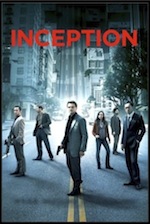 This thirty-minute activity requires minimal preparation, and if you have a lively class, it can be lots of fun. To prepare, select an action sequence containing 5 to 8 scenes from a movie such as Inception. You'll need index cards, at most eight times 1/4 of the number of students in your class. So if you have 16 students, you'll need 8 x 4= 32 cards, at most. Divide the class into teams of four and distribute to each team the same number of blank action cards as there are scenes in the action sequence.
This thirty-minute activity requires minimal preparation, and if you have a lively class, it can be lots of fun. To prepare, select an action sequence containing 5 to 8 scenes from a movie such as Inception. You'll need index cards, at most eight times 1/4 of the number of students in your class. So if you have 16 students, you'll need 8 x 4= 32 cards, at most. Divide the class into teams of four and distribute to each team the same number of blank action cards as there are scenes in the action sequence.
To begin, show the first scene of the action sequence and pause the action. Each team will now have a minute to write one or two sentences describing the action. Repeat this process until all 5 to 8 scenes have been watched and written about. Each team will end up with a complete narrative, spread out over 5 to 8 index cards.
Ask the students to mix up the cards and hand the sets to you. Redistribute the sets so each team has another team's set. Teams must now put the cards in the correct order. Teams will take turns going to the front of the class and reciting the narrative in the order they think is correct. Each team gets a point for getting the sequence correct, and two points when another team gets their sequence correct. If you're lucky, everybody wins.
If your classroom is blessed with overhead projection and your students are tech-savvy, here's how you can have even more fun. After the teams have re-sorted the action cards, have them photograph the cards in what they think is the correct order. When it's their turn to present, they can project the cards from their devices onto the front screen. Now everyone can marvel at the penmanship and perfect spelling (we hope). Of corse, when things go awry, it will happen in a big way. Have fun with this one. Recommended for all levels.
Cloze Encounters
This is a variation of the classic dictation exercise which tests students' ability to hear and identify vocabulary, grammar, and context. The instructor selects a short sequence that consists of a dialogue between two characters and ideally contains target vocabulary and/or grammar. For this exercise, Hitchhiking Made Easy from the classic movie It Happened One Night (winner of 5 Oscars) is an example of a suitable short sequence because students have probably never seen this movie, the sequence has a two-character dialogues, and it still sounds pretty darn contemporary even though the film was released in 1934.
The dialogue should be transcribed on one to two pages of text so that each character's lines are clearly identified. Based on target grammar and vocabulary, words and short phrases should be removed with space provided to write in the words such as found on a typical cloze exercise. Hitchhiking Made Easy even has classic reductions such as gonna.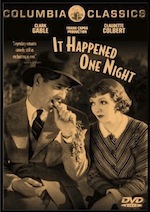
During class, students are put in pairs and handed the dialogue sheets with missing words. They watch the scene (no subtitles) and fill in the words they think they hear. They can check with each other for validation and correctness. Afterwards, a pair of student thespians can get invited to the front of the class to read their version of the dialogue. The other students listen for mistakes and provide corrections.
In this way, the entire class will collaborate to reach a consensus about the correct answers. If needed, students may watch the sequence a second time with no subtitles. When time's up, the teacher shows the scene with subtitles. The goal is for the class to correctly identify all the missing words. After all the words are correctly identified, make sure to discuss the vocabulary. Recommended for all levels when prepared accordingly.
Word-for-Word Dictation
Short sequences may be used to generate dictations. Like those generated from textbooks, they have the power to help students recognize weaknesses in vocabulary (including high-frequency words and academic words). They also reveal deficiencies in grammar and spelling, all in the context of what language learners hear. In this case, students will listen to a true-to-life dialogue.
For this exercise, select a very short movie sequence (or even a single scene) containing a dialogue of about ten thought groups. Students can come to the board for a competition or work from their seats. The dictation is the actual dialogue, which students hear as the scene is watched without subtitles. After each thought group, the scene is paused to allow students a chance to write, but they can only hear the lines one time. When the dictation is completed, I usually let the class watch the scene, a second time nonstop, to check their answers and make minor corrections.
Then, students exchange papers, and the scene is played back with subtitles to check for correctness. For board competition, the student with the most-correct responses wins. This activity is especially useful when geared to lower level ESL and EFL students, where it may be useful to pre-teach some vocabulary or phrases. All levels can benefit from dictation practice.
Blind Summary
This exercise requires at least two short sequences. To begin, students are paired up. Member A of each pair leaves the classroom while the Members B watch one of the short sequences (subtitles recommended). The A's then return to their seats. Now the B's must summarize the sequence to their "blind" partners (the A's). Afterward, the scene is shown for the A's so they can compare the actual short sequence with how it was described to them, and how they imagined it. Students discuss their experience with the communication process. Then, the students trade places for another round of Blind Summary.
For a more challenging version, the teacher shows three similar short sequences to all of the students. One student in each pair chooses to describe one of the three sequences to the partner, who must decide which of the three sequences it is. Then, the partners change roles. Even though they've both watched all three sequences, students may be surprised at how difficult it is to differentiate them.
A suggested example of three similar sequences are the job-interview sequences in The Devil Wears Prada (Chapter 3--4:35), The Internship (Chapter 5--16:12 ), and American Beauty (Chapter 15--56:58). Recommended for intermediate level and up.
To make the more-challenging version even more-challenging, the blind partners must turn their backs and only listen to the three short sequences. To succeed in this game, one student is required to be the great communicator, and the other must demonstrate superb listening skills.
Blind Summary exercises require students to focus on vocabulary which can be introduced and taught to begin the lesson. You can require students to use a particular and consistent verb tense, typically present progressive/continuous, present simple, or past simple. Blind Summary can be tailored to all levels.
Hear-the-Word BINGO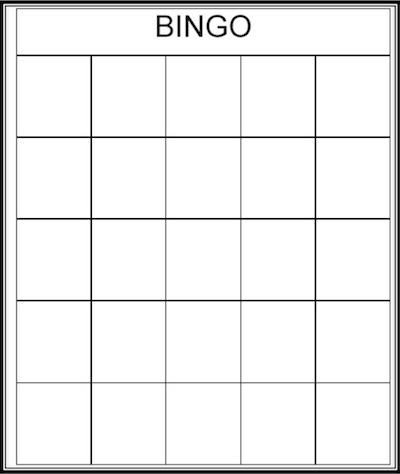
This fun version of classic BINGO requires a bit of preparation. The teacher should select a movie scene containing a very short passage of dialogue having no more than roughly 200 words. Transcribe the dialogue onto a reference text, and from it choose 25 key words that may be pre-taught, and that you want students to be able to recognize by ear. Underline these words on the transcript. Next, make a master bingo template with 25 empty spaces. Under the Bingo card, add a word bank of the same 25 words in alphabetically order, and make copies for all your students.
To play the game, give each student a bingo card with the word bank. Instruct them to write the 25 words into the empty spaces of the bingo card in any order they wish, one word to one space. Each student will most likely create a unique Bingo card. Tell students that, to play the game, they will watch a film clip. When they hear a word on the Bingo card, they should mark it. When they get five in a row, they yell out BINGO!
When ready, play the short sequence with no subtitles and enjoy the fun as students' listening skills are tested. When someone yells Bingo, stop the scene, and check their answers against the transcript with the underlined key words. By the end of the scene, everyone should have Bingo. Some students might not have heard all the words. In this case play the scene again, perhaps with subtitles.
Hear-the-Word BINGO is based on a similar game designed around a song. I came across it in the Intensive English Communication Program (IECP) at UCLA Extension. I thought the song activity might be fun to adapt to short sequences. BTW according to my Apple dictionary, the word "bingo" originated in the 1920s from an unknown source. Hear-the-Word Bingo can be adjusted to any level. It's especially effective with low-level. In this case focus on high-frequency words and run the short sequence with subtitles on, making it more of a reading exercise.
Change the Ending
Students can demonstrate their creativity by rewriting the ending a short sequence. Teachers would be wise to select a short sequence that has a cut-and-dry ending in which alternative possibilities can be imagined. For example, in The Hangover, there is a short sequence where "the" Mike Tyson shows up with his bodyguard at the guys' motel room. He leaves peacefully, giving them an hour to return his stolen tiger. But things could have turned out much differently. What alternate endings might students come up with?
After creating their alternate endings, students can, of course, perform their new version for the class. To make the lesson more pedagogically sound, the teacher might require students to include named vocabulary words or grammatical structure in their personalized versions, for example, the inclusion of adjective clauses to describe characters and actions. Recommended for high intermediate and up.
Grammar Focus
Grammar can easily be made the focus of the short sequence exercises, in cloze exercises, movie karaoke, paraphrasing, or summary writing.
Verb tense: As described above, students may be asked to summarize a scene in past tense or in present tense, or make predictions in future tense.
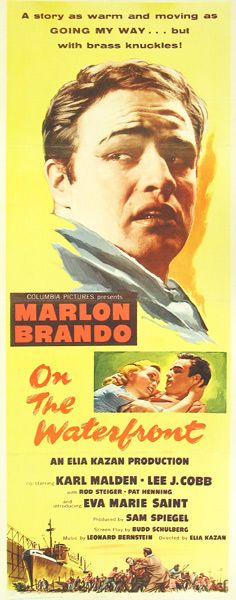 Prepositions: Prepositions can be the focus of describing actions in a scene, such as “The ball went through the net” or “She fell in love with him.” Students could be instructed to describe a scene using all the words in a given preposition set, e.g. in, on, at with a time or location prompt.
Prepositions: Prepositions can be the focus of describing actions in a scene, such as “The ball went through the net” or “She fell in love with him.” Students could be instructed to describe a scene using all the words in a given preposition set, e.g. in, on, at with a time or location prompt.
Verb and Clause Structure: With a little imagination you can illicit almost any kind of grammar pattern. Subordinate clauses can be generated in dialogue based on film scenes, as in On the Waterfront, “I coulda' been a contender” or in a summary of a scene such as in Gone with the Wind “If Scarlet had told Rhett earlier how much she loved him, he might not have left her.” In describing a scene, students can be prompted to use real or unreal conditionals by predicting or describing alternate scene endings or choices made by a character. "If only he had taken the..." "If the mother ship hadn't crashed, she would not have..." The key word is "if".
Restrictive and non-restrictive adjective clauses can be elicited by asking students to describe specific characters in a sequence (non-restrictive) e.g. in Shawshank Redemption, Ellis Redding is friends of Andy Dufresne, who never . . ." or by asking students to describe what kind of person so-and-so is (restrictive). "Andy Dufresne is a man who never . . ."
To elicit adverb clauses when describing characters or action, have students begin sentences with subordinate connectors (e.g. whenever, unless, if). The teacher can elicit subordinate clauses and verb structures by simply asking the right questions. When preparing a lesson based on a sequence, determine which grammar to elicit, and prepare a list of questions to ask students or for them to ask each other. Clause-structure exercises are recommended for high intermediate and up.
Class Dismissed
It should be obvious that movies offer endless opportunities to exploit short sequences for ESL and EFL language learning. Movie sequences contain two key constituents which can be used to grow English, action and dialogue. Find as many ways as possible to apply these elements to your teaching needs. I have faith that great success awaits those who become adept at using short sequences. Perhaps you'll want to share some of your ideas here at Movies Grow English. To contact Movies Grow English, please use the following address:
![]()
Thanks to David Chrisman, Nathan Brown, and Scott Gist for contributions to this page.

